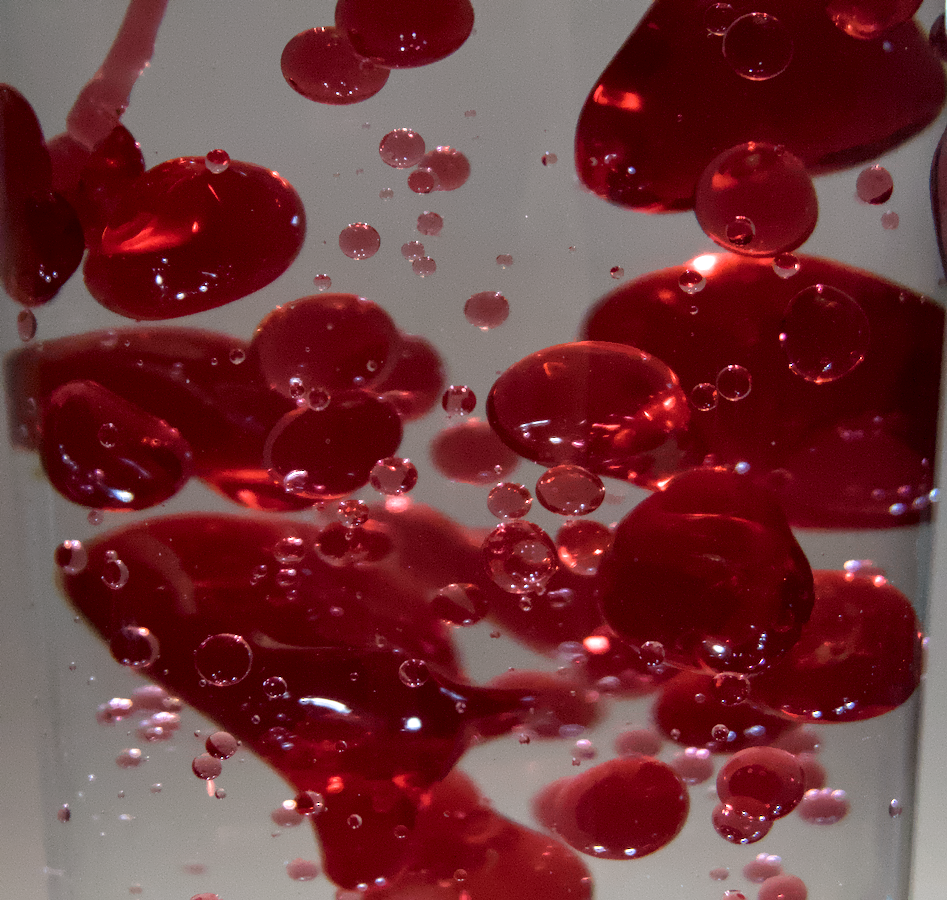The image shows dyed oil poured into water glass. The dye is oil based and only colors the oil. When poured, the oil initially sinks to the bottom of the glass and then rises to the top creating a lava lamp like effect.
Alyx Ellington
Categories
Flow Vis Guidebook
- Introduction to the Guidebook
- Overview 1: Phenomena. Why Does It Look Like That?
- Overview 2: Visualization Techniques
- Overview 3: Lighting
- Overview 4 - Photography A: Composition and Studio Workflow
- Overview 4 - Photography B: Cameras
- Overview 4 - Photography C: Lenses - Focal Length
- Overview 4 - Photography C: Lenses - Aperture and DOF
- Overview 4: Photography D: Exposure
- Overview 4 - Photography E - Resolution
- Overview 5 - Post-Processing
- Clouds 1: Names
- Clouds 2: Why Are There Clouds? Lift Mechanism 1: Instability
- Clouds 3: Skew - T and Instability
- Clouds 4: Clouds in Unstable Atmosphere
- Clouds 5: Lift Mechanism 2 - Orographics
- Clouds 6: Lift Mechanism 3 - Weather Systems
- Boundary Techniques - Introduction
- Dye Techniques 1 - Do Not Disturb
- Dye Techniques 2 - High Visibility
- Dye Techniques 3 - Light Emitting Fluids
- Refractive Index Techniques 1: Liquid Surfaces
- Refractive Index Techniques 2: Shadowgraphy and Schlieren
- Particles 1- Physics: Flow and Light
- Particles 2: Aerosols
- Particles 3: In Water
- Particles 4 -Dilute Particle Techniques
- Art and Science
- TOC and Zotpress test
- Photons, Wavelength and Color


7 Comments. Leave new
The focus on this image is very impressive!
The size distribution of the oil drops is fascinating: it makes for a great composition and it also could be interesting to look at scientifically.
How did you decide on how long to wait for the oil to rise before taking the photo?
The depth of field that you managed to capture is very nice, I appreciate the artistry of the larger blobs in the background being visible but just slightly out of focus.
An excellent capture of forces interacting near equilibrium
What was your process for focusing the camera?
This image demonstrates buoyant forces really well.